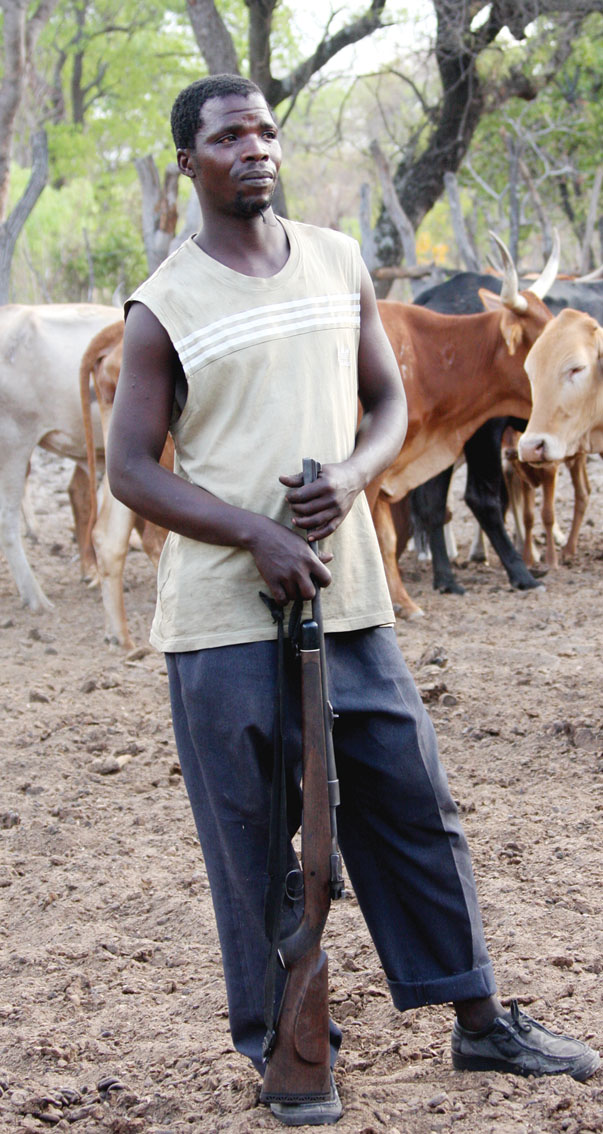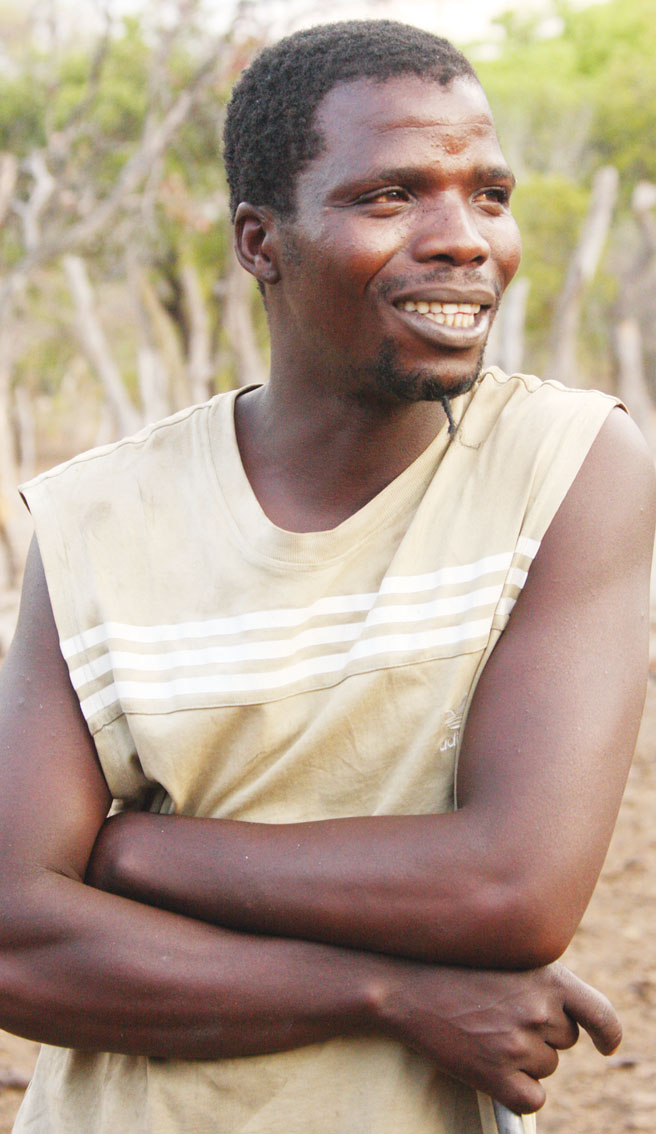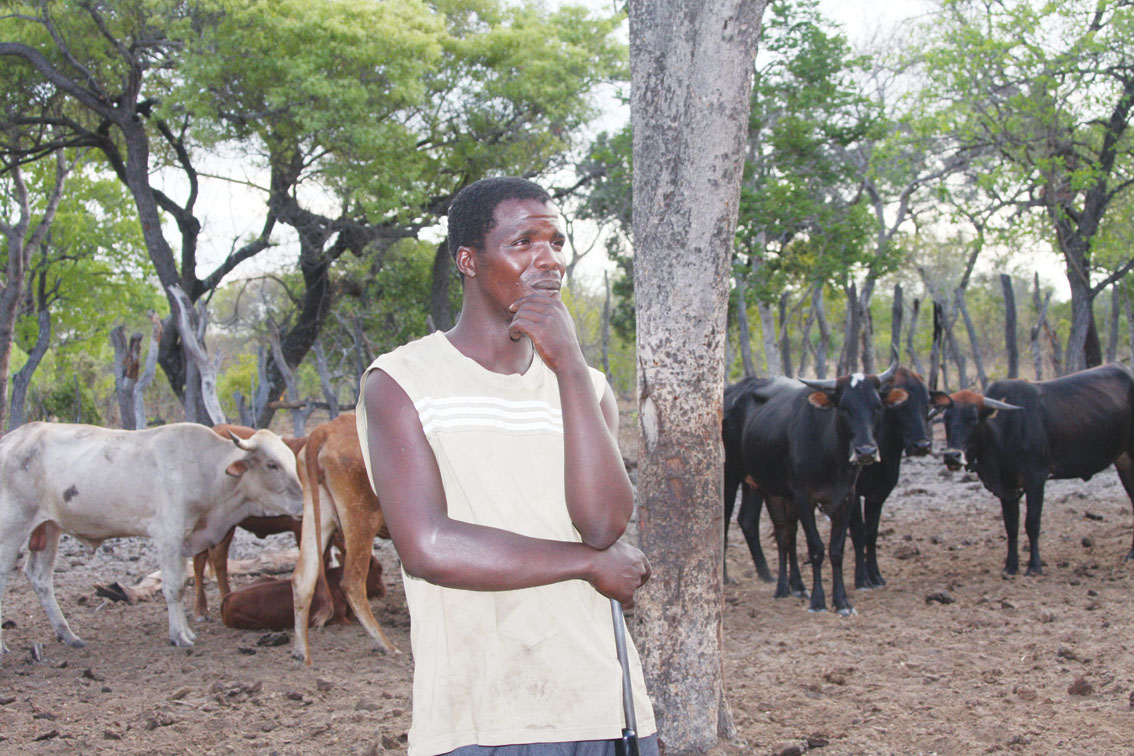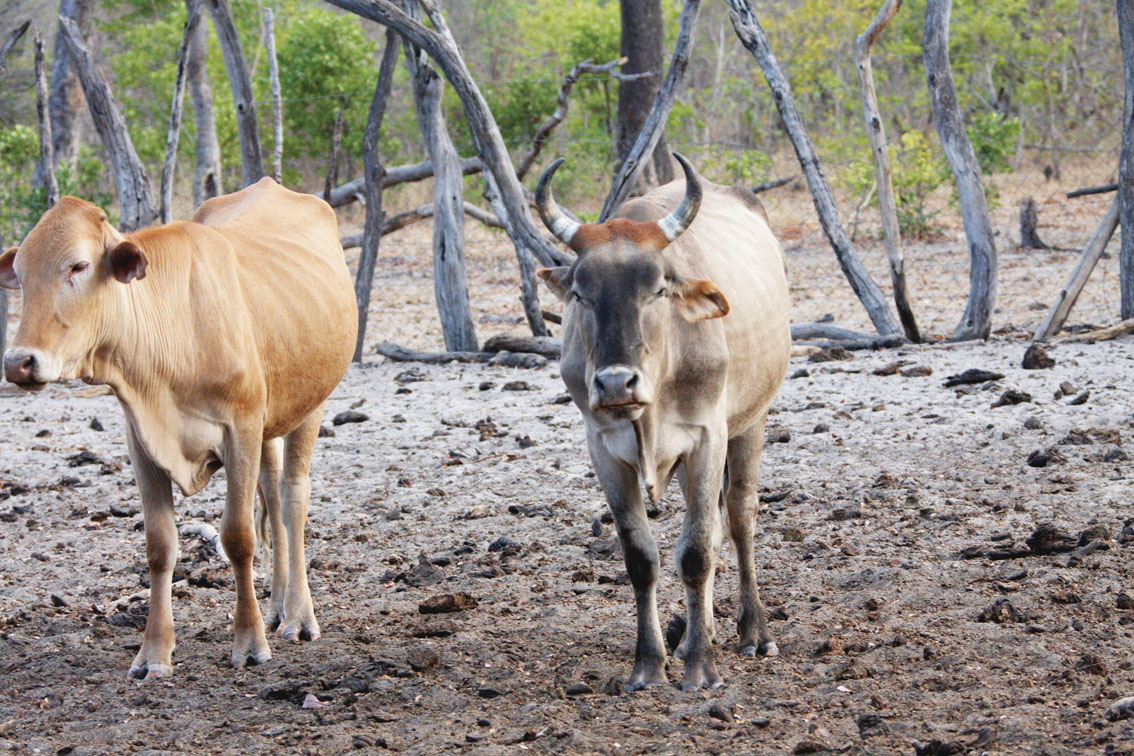It’s war at Number 256 borehole
Source : KUTLWANO
Author : Aron Moreeng
Location : GABORONE
Event : Feature
The herdman sits in a traditional chair next to a makeshift shack that plays the critical role of a house. Lying next to him, is his only dog, laying alert and watchful of its master as he goes about polishing his and their best form of defence from predators - a 30.06 “machine” gun. It is the mastering of this gun that has got him the menial yet risky job of herding cattle for his uncle. Yes, herding cattle demands a gun fulltime!
In this part of the world, guns, like dogs, are herdsmen`s best friend. For every herdman who leaves the kraal every morning to herd his cattle, the impression is always clear. There are always two things involved. Either he is attacked and killed by wild predators or he kills them upon contact. Very much aware of these dangers, brave warriors like 32-year-old Kebatsholetse Josia continue to risk their lives herding cattle and goats to make ends meet. A few kilometres from where they are, trainee-soldiers are fully armed with powerful machine guns, some as powerful enough to wipe out the whole village of Pandamatenga. For the trainee-soldiers, the guns are used for exactly that, training them while for Kebatsholetse and his peers at Number 256 borehole - between Pandamatenga and Kasane - the 30.06 “machine” gun, is a matter of life and death.
They have not undergone any training in using guns. For them, it is all a matter of experience and a shrewd individual coupled with dexterity as target men to land the post of herdsman. “My brother used to own a gun and I was always interested in how it works and how it shoots,” Kebatsholetse says nonchalantly. As the news crew arrives at his cattle-post, Kebatsholetse is busy polishing and inspecting his gun for any deficiencies. It has been a long, event-free day. Unfazed by the unceremonious visitors, he bends his 30.06 machine and takes out the remaining three bullets and places them on what used to be a 20-litre paraffin container. It turns out the machine loads about six bullets but the other three were recently used to exterminate a hungry lion ready to pounce on him and his herd. “I missed it with the first two bullets and that enraged it even more. I had to be on point at the third go as the lion leapt towards us but it fell to the ground,” he states.
Welcome to the world of herdmanship in the Chobe District where predators rule the roost. While other herdsmen in other parts of the country follow their animals without any weapons, in Chobe District, that would be very suicidal. Every herdsman follows his herd with either a gun or a machete, to defend himself should the need arise. And in most cases, the need does arise but when it does they act on their feet. It is a normal routine for them. Almost every day they come face-to-face with the fiercest of predators and the battle always ensues. And herdsmen have become some of the best “assassins” in the bushes.
Kebatsholetse Josia was born in Pandamatenga in 1980 but looks a number of years older than his age. Without that opportunity to spend more years in school, Josia has lived the better part of his life at Number 256 where his father used to work as a herdsman. Whereas a rich man`s child inherits his father`s wealth, Kebatsholetse, on the other hand, has inherited his father`s herdsmanship and has been looking after cattle for many years. It is not an easy undertaking in this part of the world. At sunset, he prepares to make fire around the kraal to chase lions away. He has to have enough firewood to last the whole night. Hence, every night, he has to wake up once or twice to increase the firewood as the fire performs a pivotal part as deterrence to lions.
Although Kebatsholetse is currently herding 14 cattle, that was not the case just a few months back. In fact, the animals used to be as many as 60 but due to the predators, he is only in charge of 14. And the herdsmanship is different from all others in other parts of the country. While the Department of Road Transport and Safety (DRTS) implores farmers to keep their animals away from the national roads, in this part of the world, the situation is different. Kebatsholetse and other herdsmen prefer to herd their animals along the road reserves. “Our animals prefer grazing on the road reserves for fear of lions,” he reveals. A drive along the Kasane/Pandamatenga Road vindicates him. A total of seven different herds of cattle were seen grazing along the road reserves, with herdsmen following a few steps behind, armed with a machete or a “machine” gun. Another careful observation exposes that none of the cattle are dehorned. He says they do not usually dehorn the animals so that they can defend themselves in the face of danger.
At one point, Kebatsholetse states that he was forced to lock himself in the shack as six lions attacked cattle in the kraal and had a field day while he remained hapless. However, in any instance, where they shoot and kill the lions, he says, they usually inform the Department of Wildlife and National Parks to collect the carcasses.
A Wildlife Officer, Modiegi Bakane, confirms and expresses knowledge of the herdmanship with guns in the district. Although they are worried that some herdsmen may engage in poaching activities, he also, acknowledges the kind of dangers that the herdsmen are routinely exposed. Meanwhile, a single goat is grazing indifferently with a herd of cattle. This is the only remaining goat out of close to 100 small-stock that used to bleat after the moos of the cattle, that have since become its companion. As for Kebatsholetse and his peers, a nap while herding cattle is a foreign feeling, least they become a different “menu” from the usual ones for the lions and wild animals. And the guns are forever loaded, ready to shoot in defence and kill. ENDS
Teaser:
Heardmen have become some of the best "assassins" in the bushes...
















